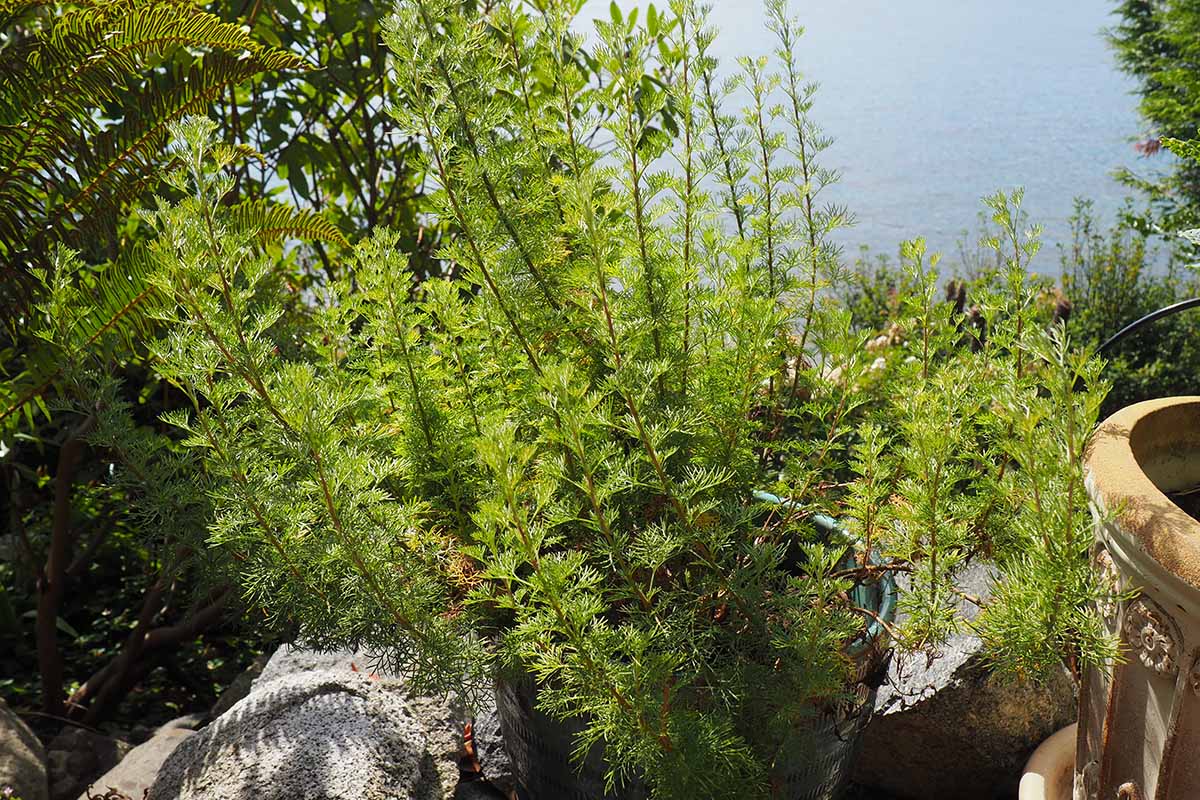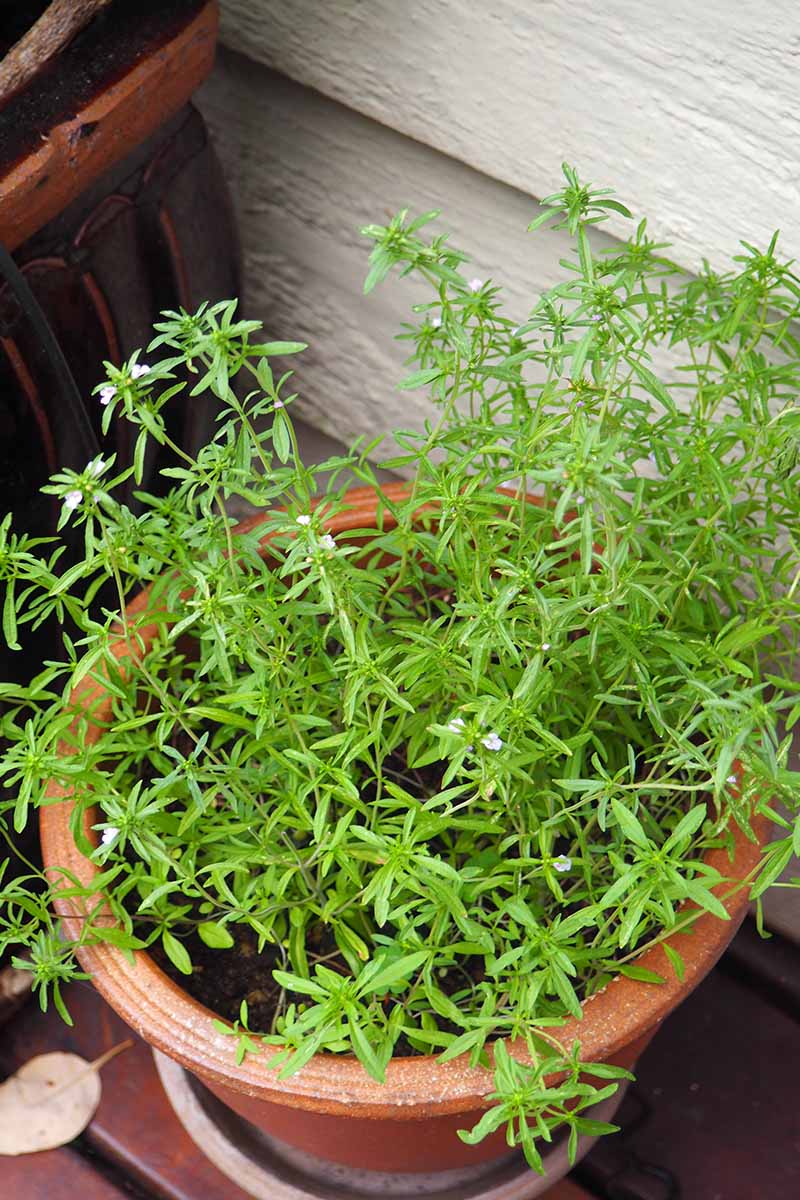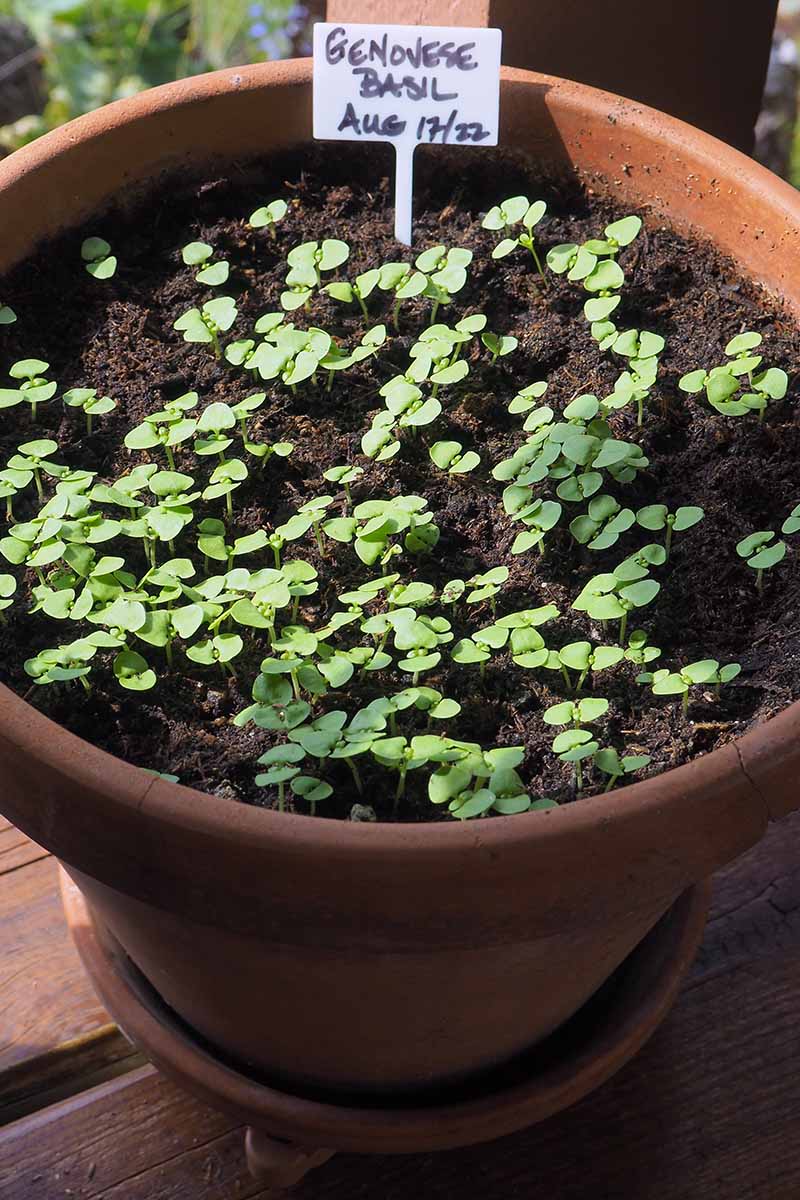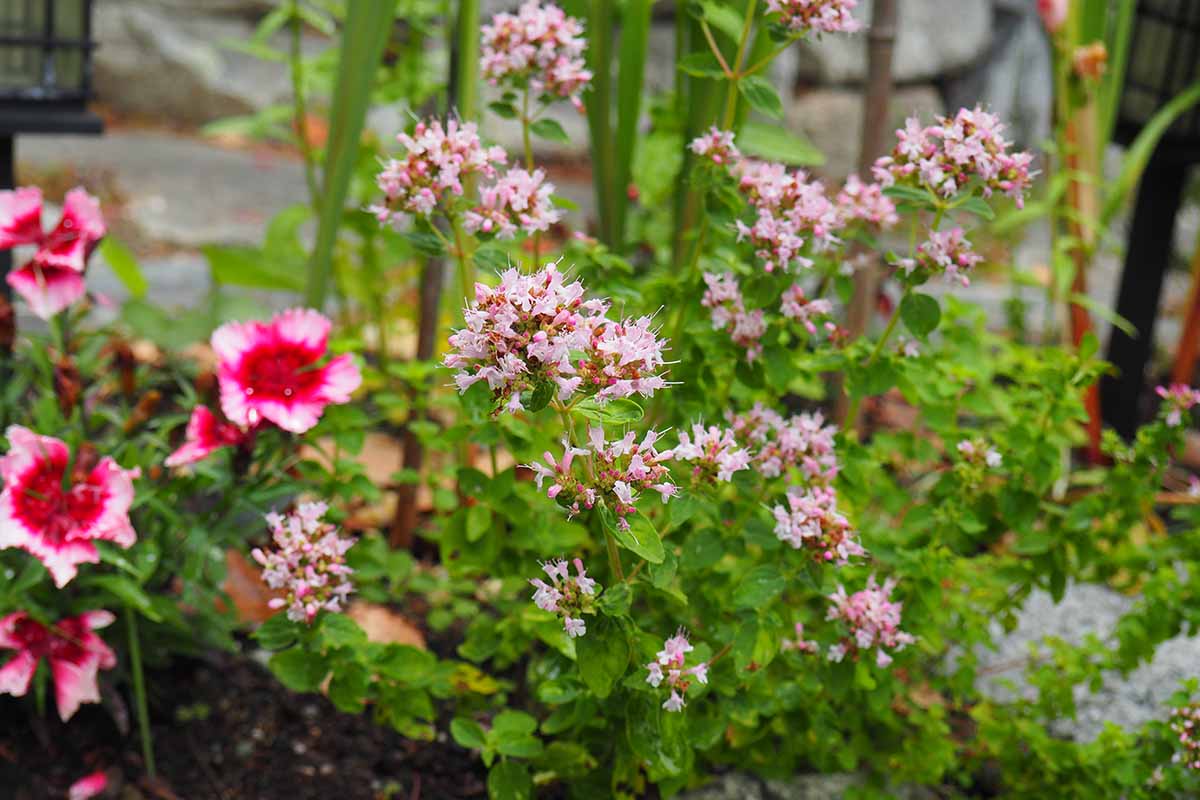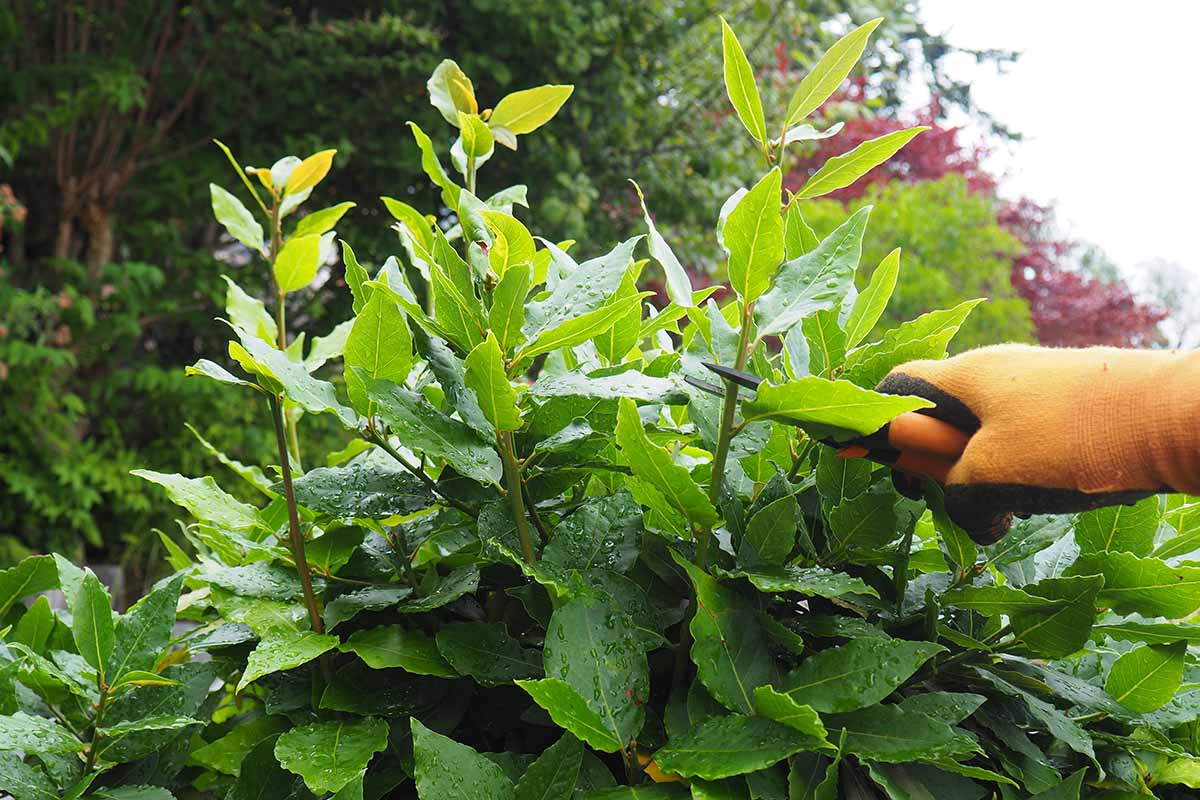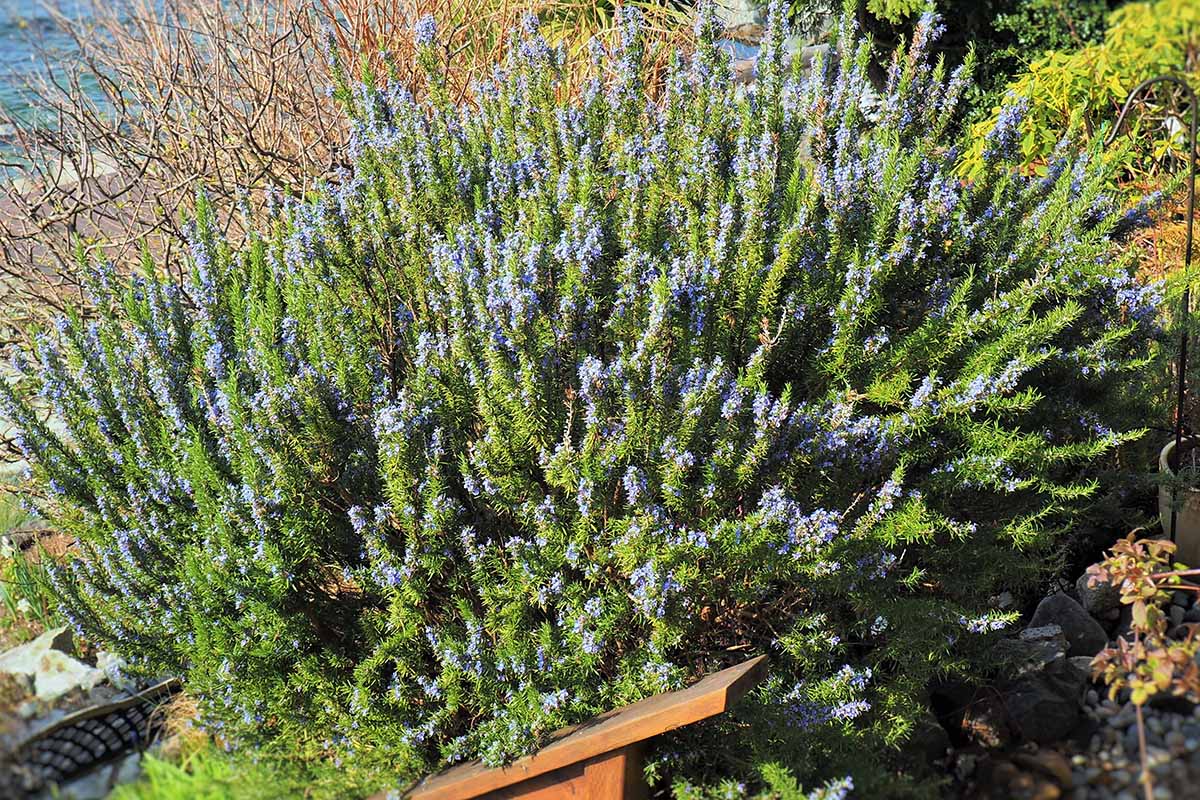We link to vendors to help you find relevant products. If you buy from one of our links, we may earn a commission. Annual herbs like basil and summer savory die back once cool temperatures arrive and are quick and easy to dispose of – or you could bring some indoors to enjoy until spring! Many herbaceous perennials, like mint, oregano, and tarragon, lose their foliage as they enter dormancy and cold-weather care is quick and easy. But there are also the semi-woody herbs like hyssop, sage, and thyme, with woody bases and leafy tops, and the larger woody shrubs such as bay, lavender, and rosemary, that require a little extra attention to prepare for freezing temperatures. And because cold, wet conditions typically kill herbs more effectively than icy temperatures, a well-draining location is important too. So as the days start to shorten and the leaves change color, pull on a cardigan and join us for a look at how to winterize your herb garden! Here’s everything we’ll cover in this guide:
General Care
Before we get into caring for specific types of herbs, let’s cover the best methods for general cold-weather care.
Fall Fertilizing
Finish fertilizing annual and perennial herbs by mid- to late August in order to slow and stop new growth. Tender buds and new foliage that develop past August may not survive icy temperatures and may suffer cold damage, which can extend throughout affected plants and open them to disease.
Hydration
If rainfall isn’t accommodating, continue to water your herbs regularly through late summer and into fall to ensure adequate hydration. Drought-stressed plants entering dormancy are more susceptible to damage from cold, disease, wet conditions, and wind, and if they do survive until spring, they often emerge stunted and weakened. For areas with dry winters, continue to water occasionally and lightly every four to six weeks, provided the ground isn’t frozen.
Cleanup
Clean beds and container herbs by weeding and removing plant debris from the soil surface. This helps to reduce the risk of bacterial and fungal plant infections as well as infestation by pests who love decaying plant matter as a favorite cold-weather habitat.
Container Care
All types of perennial herbs can be successfully overwintered in containers, planters, and pots. If containers don’t receive regular rainfall, water lightly every four to six weeks as long as the soil isn’t frozen. Light Gray Plastic Pot Toes You can find pot toes in handy 12-packs at Home Depot. Containers can also be moved into a protected location such as an unheated greenhouse or under eaves. Cover the soil surface with a three- to six-inch layer of airy mulch. Effective winter mulches are composed of loose materials like bark mulch, leaf mold, pebbles, pine boughs, pine needles, sawdust, and straw. Provide extra insulation from freezing temperatures by wrapping containers with frost blankets or bubble wrap to protect sensitive roots that might be touching container walls. During cold spells, cover evergreen herbs like bay and rosemary with burlap or floating row cover material.
Annuals
Tender annuals, like basil, coriander, and summer savory, grow for a single season then die with the first frost. Once plants have wilted, pull them out by the roots and compost them. Empty soil from containers and rinse with a garden hose. Sanitize container interiors before storage with a weak bleach and water solution of one part bleach to 10 parts water. Many potted annuals, such as basil and summer savory, can also be brought indoors and placed on a sunny windowsill for harvesting throughout fall. But once the short days arrive, mature plants tend to stop growing and die off even if they aren’t exposed to frost or freezing temperatures. To enjoy fresh leaves over winter, sow a late crop then bring juvenile plants indoors – in the right conditions, they’ll continue to grow and produce leaves throughout the off-season. Here’s how: Throughout August, sow fast-growing annuals such as basil, coriander, and summer savory in four- to eight-inch containers filled with a humus-rich potting mix. Place outdoors in a bright location with morning sun and light afternoon shade, keeping the soil lightly moist. Once plants have two sets of true leaves, move into a full sun location and feed with a balanced 10-10-10 NPK fertilizer. When overnight temperatures dip to 55°F, bring containers indoors to place in a bright, sunny window to enjoy through the fall. To encourage plants to keep producing new foliage, fertilize monthly and use a countertop grow light to provide at least six hours of bright light per day – check out some of the attractive lamp ideas in our guide to 13 of the best grow lights.
Herbaceous Perennials
Herbaceous perennials are similar to annuals in that all the topside growth – flowers, leaves, and stems – dies down in autumn in response to shorter days and cooler temperatures. But unlike annuals, the roots stay alive and healthy until spring with proper care, with new shoots emerging each year in the spring. Some popular examples include chives, mint, oregano, and tarragon. To prep these plants for cold weather, reduce watering in mid-autumn and cut back all growth to just above the ground. To minimize damage caused by freeze-thaw cycles, drying winds, and icy temperatures, spread a thick, three- to six-inch layer of mulch over the root ball and extend it out by about six inches for extra protection against freezing. Some varieties, like chives and mint, can be dug up and transplanted into small pots for indoor harvesting over fall and winter. Transplant in late summer while plants are still productive. Use a spade to lift up a four-by-four-inch section of the plant and root ball and lightly trim away any excess soil to fit into a six- or eight-inch container of humus-rich potting soil. Cut back all the stems to four to six inches and tidy plants, removing any damaged, dead, or dying growth. Keep outdoors in a location with morning sun and light afternoon shade for four to six weeks to recover from transplant shock. Bring indoors as overnight temperatures drop to 55°F and place in a sunny windowsill or under grow lights. Fertilize monthly.
Woody and Semi-Woody Perennials
Prepare perennials of a woody or semi-woody nature – such as bay and rosemary, or sage and thyme – by removing weeds and debris from around the plant’s base. After the first frost, lay down a three- to six-inch layer of mulch over the root ball and extend it past the plant’s dripline by six to 12 inches. Leave a two-inch, mulch-free collar around the stem base. Before September starts, cut away dead or damaged branches and lightly trim straggly stem tips to create a uniform canopy – this helps to reduce damage from cold temperatures, snow, and wind. Use the tender trimmed tips in the kitchen or pop them into the freezer for later use. Avoid pruning beyond the end of August to allow cuts to harden and protect tender new growth – which is susceptible to being frost-nipped, which can lead to damaged, stressed, or weakened plants. A cardboard box or cloche can be used to protect small to mid-sized specimens but it will need to be securely anchored in place to withstand strong seasonal winds. Small specimens can also be dug up, potted, and brought indoors. Pot up in early to mid-September, then place in part shade for a few weeks to recover from transplant shock – but bring indoors before the first frost. Place in a sunny windowsill and keep the soil lightly moist. Add a grow light and fertilize monthly if you want to continue snipping a few fresh leaves here and there over winter. Protect large evergreens like bay and rosemary from freezing temperatures by wrapping them with burlap or floating row cover material to protect leaves and stem tips from cold damage. Use a thick, insulating mulch to protect roots, move containers into sheltered locations, and cover evergreen foliage in freezing temperatures, and you’ll enjoy healthy plants with vibrant new growth the next growing season. What tricks do you folks use to winterize your herb garden? Tell us about it in the comments section below. And for more info on how to grow and care for herbs, check out these guides next:
How to Start Your Own Herb GardenHow to Grow Herbs in ContainersTips for Companion Planting in Your Herb Garden


